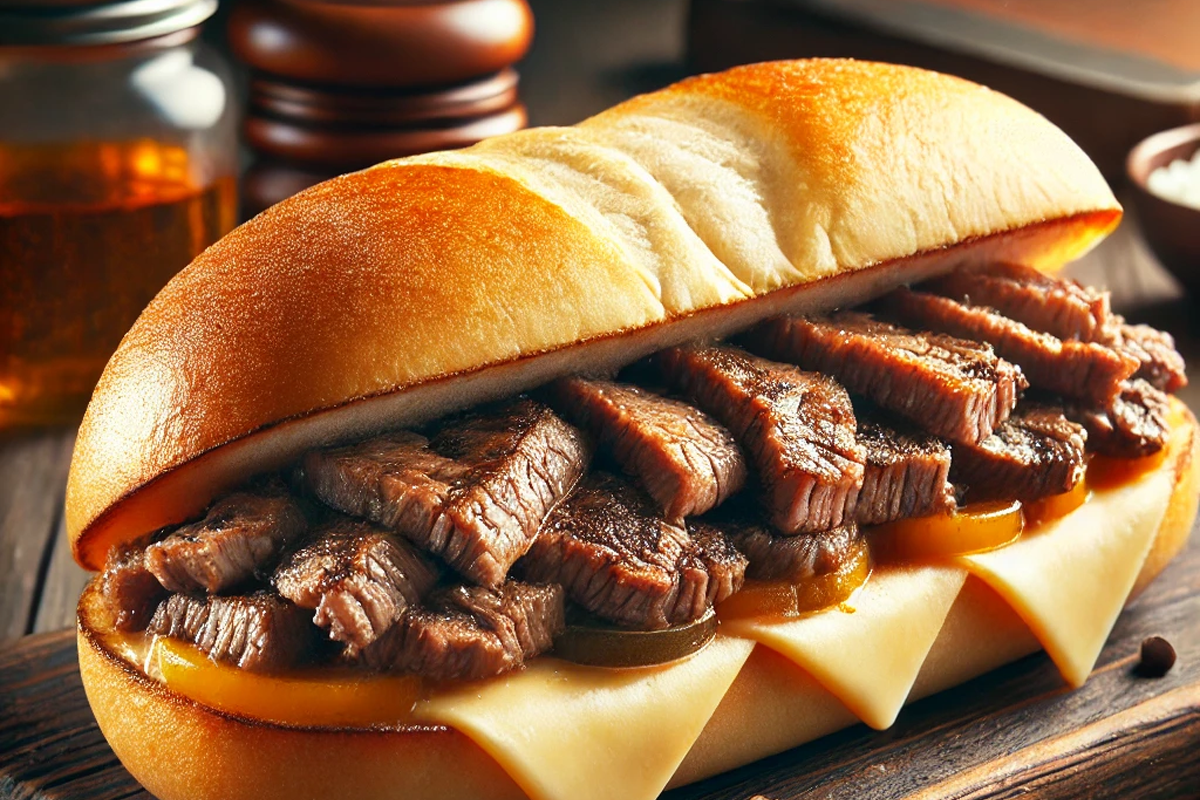The Philly steak, more widely known as the Philly cheesesteak, stands as a cornerstone of Philadelphia’s rich culinary history. But why is it called a Philly steak, and what makes this sandwich stand out from other steak sandwiches around the world? In this article, we’ll explore the origins, evolution, and cultural significance of the Philly cheesesteak, breaking down why it’s forever linked to the city of Philadelphia.
The Origin of the Famous Cheesesteak
The Philly cheesesteak began in the 1930s, thanks to Pat Olivieri, a hot dog vendor in South Philadelphia. Olivieri, tired of selling hot dogs, decided to grill thinly sliced beef and put it on an Italian roll for his lunch. A passing cab driver, who caught the aroma, asked for one, sparking a citywide craze.
- Pat Olivieri created what we now call the Philly cheesesteak.
- The original sandwich only had steak on an Italian roll—cheese didn’t come into the picture until later.
How Cheese Transformed the Sandwich
The first versions of the sandwich didn’t include cheese. Employees at Pat’s King of Steaks added provolone to the sandwich in the 1940s, which made the meal richer. Over the years, customers started enjoying a variety of cheese options.
- Provolone gave the sandwich a bolder, creamier taste.
- Cheese Whiz gained popularity in the 1950s, adding a salty and creamy texture.
- American cheese soon joined as a favorite for its smooth melt.
Cheese elevated the Philly steak from a basic steak sandwich to the beloved cheesesteak we know today. Fans continue to debate whether provolone, Cheese Whiz, or American cheese makes the best version of the cheesesteak.
Explore a lighter twist on the classic sandwich with this Easy Chicken Philly Cheesesteak Recipe.
Why Is It Called “Philly” Steak?
People started calling it Philly steak because of its deep connection with Philadelphia. As the sandwich gained fame, its name became shorthand for this local creation, a reflection of the city’s pride and working-class roots. Over time, even restaurants outside the city labeled their versions as “Philly steaks.”
- The name “Philly” highlights its origin.
- Philadelphia’s culture and identity became intertwined with the sandwich, making it iconic.
For a deeper dive into what makes the Philly cheesesteak so special, read What Makes Philly Cheesesteak Special: A Guide to Philadelphia’s Iconic Sandwich.
The Key Ingredients That Define a Philly Cheesesteak
While the sandwich may seem simple, each ingredient plays a crucial role in creating the distinctive flavor and texture. Here’s what you need for an authentic Philly cheesesteak:
- Ribeye steak: Cooks thinly slice ribeye, grill it on a flat-top, and ensure every bite is juicy and tender.
- Cheese: The standard options include provolone, Cheese Whiz, or American cheese.
- Italian rolls: Authentic cheesesteaks use Amoroso rolls, known for their soft interior and slightly crispy crust.
Some variations feature toppings like grilled onions, mushrooms, or peppers. However, purists insist that the basic combination of ribeye, cheese, and Italian rolls defines the Philly cheesesteak.
Get more tips on perfecting this sandwich in your own kitchen by checking out Philly Cheesesteak Ultimate Recipe and Tips.
Philly Cheesesteak’s Cultural Impact in America
Although the Philly cheesesteak originated in Philadelphia, its fame spread across the United States. Today, many cities offer their own takes on the sandwich, although the authentic version remains the gold standard.
- Tourist draw: Visitors to Philadelphia flock to iconic spots like Pat’s King of Steaks and Geno’s Steaks to try the original.
- Cultural symbol: The sandwich regularly appears in media and food competitions, helping to spread its fame even further.
- Inspiration: Restaurants across the country have put their own spin on the cheesesteak, creating variations like vegan versions, cheesesteak pizzas, and even cheesesteak egg rolls.
How Different Regions Adapted the Cheesesteak
As the cheesesteak gained popularity, different regions started adding their own ingredients. While these versions offer delicious alternatives, they often depart from the classic Philly recipe.
- California: Often includes bell peppers, onions, and avocado.
- Chicago: Restaurants here might add mushrooms or use non-traditional bread.
- New York: Typically, New York-style cheesesteaks come in larger portions, with extra cheese and optional toppings.
Though these regional variations are popular, nothing matches the original found in Philadelphia.
Busting Common Myths About the Philly Cheesesteak
With fame comes some common myths. Let’s clear up a few misconceptions about the Philly cheesesteak:
- Myth: Every cheesesteak includes peppers and onions.
- Truth: Peppers and onions are optional extras, not required in the traditional version.
- Myth: Any steak sandwich qualifies as a Philly cheesesteak.
- Truth: A true Philly cheesesteak requires ribeye, Amoroso rolls, and one of the classic cheeses.
FAQs
What makes a Philly cheesesteak authentic?
An authentic Philly cheesesteak includes thinly sliced ribeye steak, Amoroso rolls, and one of three cheeses—provolone, Cheese Whiz, or American. Toppings like onions or mushrooms are optional.
How is a Philly cheesesteak traditionally served?
Cooks serve the sandwich hot, with thinly sliced ribeye and melted cheese on an Italian roll. Onions, mushrooms, or peppers can be added if desired.
What cut of meat is used in a Philly cheesesteak?
The most common and authentic cut is ribeye steak, known for its tenderness and rich flavor.
Conclusion
The Philly cheesesteak is more than just a sandwich—it’s a symbol of Philadelphia’s culinary heritage. Its history, simple yet flavorful ingredients, and cultural significance have helped it become one of the most beloved dishes in the United States. Whether you prefer it with provolone, Cheese Whiz, or American cheese, there’s no denying the Philly steak’s universal appeal.
For more tips on making your own cheesesteak, check out this detailed Philly Cheesesteak Recipe Guide.

